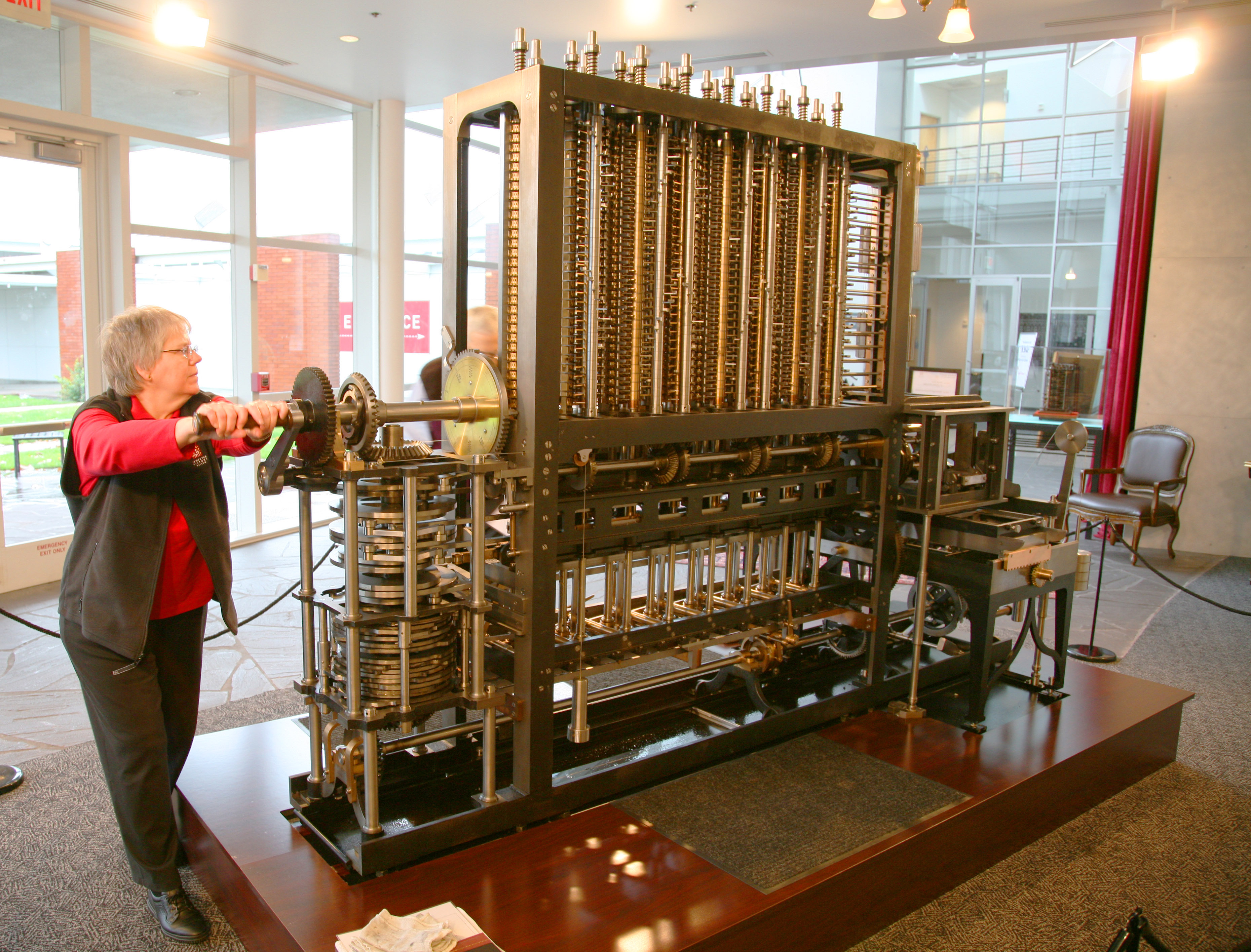 |
| The second No.2 Difference Engine under operation in San Jose |
Since the manufacturing tolerances, while attainable, were so high, the work was expensive. Due to this and the fact that the British government eventually became disinterested and annoyed at the cost, they eventually withdrew funding. Babbage, however, carried on and designed a printer for the difference engine (which printed results), the multipurpose, Turing complete computer (the Analytical Engine), and the difference engine no.2, which was an updated, streamlined version of the first engine but with fewer moving parts and more efficient operation. However, Babbage was not able to complete any of these, as did not have the money and disagreed constantly with his chief engineer.
It was not until the late twentieth century that Babbage's work was rediscovered. The London Science Museum had acquired Babbage's plans and began to construct a No. 2 difference engine in 1988. Their construction using Victorian-era tolerances and tools was successful, and they have subsequently built the an analytical engine, printer, and second no.2 difference engine, which currently resides in San Jose, California.
Image courtesy of Wikimedia Commons, under the Creative Commons Attribution Generic 2.0 license.
Cool! I was not familiar with the Babbage engine. I'd love to see a few more details about who Babbage was, and what his engine did in your post. Have you been to see it in San Jose?
ReplyDeleteThat's pretty awesome. It seems like Babbage's work completely disappeared after his funding evaporated, did his machine affect the development of other early computing machines.
ReplyDeleteIt is pretty amazing that someone was able to build a computing machine way back in the 19th century. I am also wondering what effects his difference engine had? And I am not sure if this was mentioned, but was it used to tackle problems that humans could not handle themselves?
ReplyDeleteThat's pretty awesome. Computers are pretty complicated things, so Babbage's creation, small and weak it may have been, is quite an impressive feat. Look how far computers have come since then. From calculating basic logarithmic functions to driving cars, holding conversations, and so much more. I believe that in the coming years, technology, and especially computers, are going to start progressing more and more rapidly. Singularity ho!
ReplyDelete